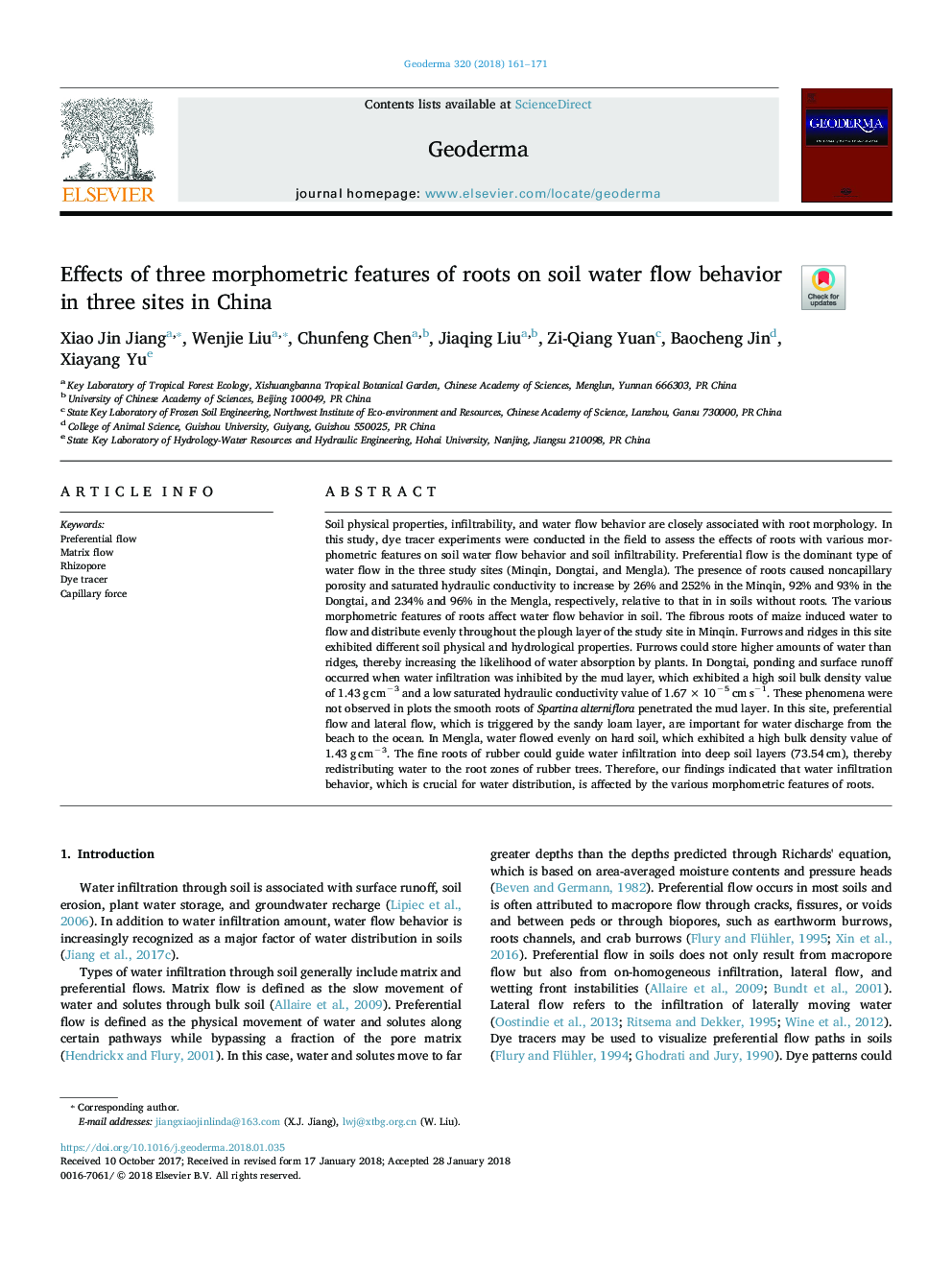| کد مقاله | کد نشریه | سال انتشار | مقاله انگلیسی | نسخه تمام متن |
|---|---|---|---|---|
| 8894135 | 1629397 | 2018 | 11 صفحه PDF | دانلود رایگان |
عنوان انگلیسی مقاله ISI
Effects of three morphometric features of roots on soil water flow behavior in three sites in China
ترجمه فارسی عنوان
اثر سه ویژگی مورفومتری ریشه در رفتار جریان آب خاک در سه مکان در
دانلود مقاله + سفارش ترجمه
دانلود مقاله ISI انگلیسی
رایگان برای ایرانیان
کلمات کلیدی
جریان ترجیحی جریان ماتریس، ریزپور، ردیاب رنگ نیروی موازی،
موضوعات مرتبط
مهندسی و علوم پایه
علوم زمین و سیارات
فرآیندهای سطح زمین
چکیده انگلیسی
Soil physical properties, infiltrability, and water flow behavior are closely associated with root morphology. In this study, dye tracer experiments were conducted in the field to assess the effects of roots with various morphometric features on soil water flow behavior and soil infiltrability. Preferential flow is the dominant type of water flow in the three study sites (Minqin, Dongtai, and Mengla). The presence of roots caused noncapillary porosity and saturated hydraulic conductivity to increase by 26% and 252% in the Minqin, 92% and 93% in the Dongtai, and 234% and 96% in the Mengla, respectively, relative to that in in soils without roots. The various morphometric features of roots affect water flow behavior in soil. The fibrous roots of maize induced water to flow and distribute evenly throughout the plough layer of the study site in Minqin. Furrows and ridges in this site exhibited different soil physical and hydrological properties. Furrows could store higher amounts of water than ridges, thereby increasing the likelihood of water absorption by plants. In Dongtai, ponding and surface runoff occurred when water infiltration was inhibited by the mud layer, which exhibited a high soil bulk density value of 1.43â¯gâ¯cmâ3 and a low saturated hydraulic conductivity value of 1.67â¯Ãâ¯10â5â¯cmâ¯sâ1. These phenomena were not observed in plots the smooth roots of Spartina alterniflora penetrated the mud layer. In this site, preferential flow and lateral flow, which is triggered by the sandy loam layer, are important for water discharge from the beach to the ocean. In Mengla, water flowed evenly on hard soil, which exhibited a high bulk density value of 1.43â¯gâ¯cmâ3. The fine roots of rubber could guide water infiltration into deep soil layers (73.54â¯cm), thereby redistributing water to the root zones of rubber trees. Therefore, our findings indicated that water infiltration behavior, which is crucial for water distribution, is affected by the various morphometric features of roots.
ناشر
Database: Elsevier - ScienceDirect (ساینس دایرکت)
Journal: Geoderma - Volume 320, 15 June 2018, Pages 161-171
Journal: Geoderma - Volume 320, 15 June 2018, Pages 161-171
نویسندگان
Xiao Jin Jiang, Wenjie Liu, Chunfeng Chen, Jiaqing Liu, Zi-Qiang Yuan, Baocheng Jin, Xiayang Yu,
